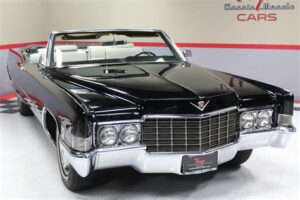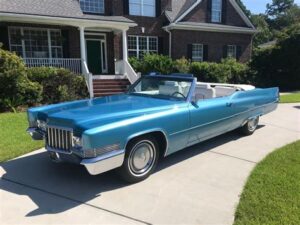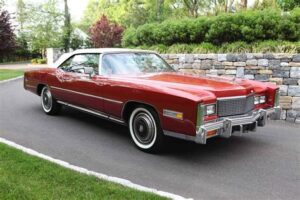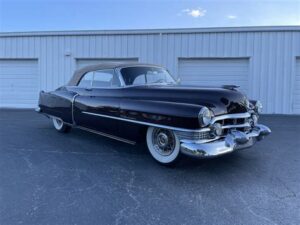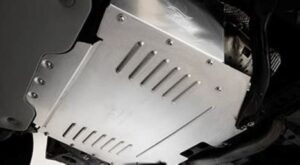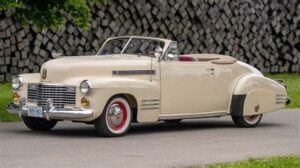When it comes to maintaining the performance and efficiency of your 2010 Cadillac SRX, one component that plays a vital role is the catalytic converter. This essential part not only helps reduce harmful emissions but also ensures your vehicle runs smoothly and efficiently. However, like any car part, the catalytic converter can face issues over time, leading to performance problems and increased emissions. In this comprehensive guide, we’ll delve into the functions of the 2010 Cadillac SRX catalytic converter, explore common issues owners may encounter, and provide practical advice on how to replace a faulty unit. Furthermore, we will highlight the signs indicating a failing catalytic converter and offer tips for maintaining your SRX to ensure its optimal performance. Whether you’re a dedicated Cadillac enthusiast or a casual driver, understanding this component is key to keeping your vehicle in top shape.
Understanding The Role Of The 2010 Cadillac SRX Catalytic Converter
The 2010 Cadillac SRX is equipped with a catalytic converter that plays a crucial role in the vehicle’s emissions control system. Its primary function is to convert harmful pollutants from the engine’s exhaust gases into less harmful substances before they are released into the atmosphere. This process is essential for complying with environmental regulations and maintaining air quality.
A catalytic converter typically contains a catalyst made from precious metals such as platinum, palladium, and rhodium. These materials facilitate chemical reactions that break down dangerous components like carbon monoxide, hydrocarbons, and nitrogen oxides. In doing so, the catalytic converter helps to reduce smog and other pollutants that contribute to air pollution.
In addition to its environmental benefits, a properly functioning catalytic converter also supports the overall performance of the 2010 Cadillac SRX. A clogged or malfunctioning converter can lead to reduced power, lower fuel efficiency, and potential damage to the engine. Regular maintenance and timely replacement, when necessary, are vital for ensuring that the catalytic converter contributes effectively to your vehicle’s performance and compliance.
Understanding the role of the catalytic converter in your 2010 Cadillac SRX not only emphasizes its importance in emissions control but also highlights the need for vehicle owners to stay vigilant about their exhaust systems’ health. Ignoring issues with the catalytic converter can have significant long-term consequences, both for environmental impact and vehicle performance.
Common Issues With The 2010 Cadillac SRX Catalytic Converter
The 2010 Cadillac SRX catalytic converter is a crucial component of the vehicle’s exhaust system, designed to convert harmful emissions into less harmful substances. However, like any mechanical part, it is prone to several issues over time. Here are some of the most common problems associated with this specific model’s catalytic converter:
- Clogging: One of the most common issues is clogging, which occurs when the converter’s internal components become blocked with carbon deposits or other debris. This can lead to reduced engine performance and increased emissions.
- Overheating: Excessive heat can cause the catalytic converter to fail. This overheating can be a result of engine misfires or a rich fuel mixture, which can lead to melted internal components within the converter.
- Physical Damage: The catalytic converter can be damaged if the vehicle encounters road debris or if it is struck while off-roading. Physical damage can lead to exhaust leaks and loss of efficiency.
- Oxygen Sensor Failures: The oxygen sensors that monitor the exhaust and provide feedback to the engine control unit can fail, leading to incorrect adjustments in the air-fuel mixture. This can increase the risk of damage to the catalytic converter.
- Exhaust Leaks: Any leaks in the exhaust system prior to the converter can result in improper functioning. These leaks can allow untreated gases to escape, reducing the effectiveness of the catalytic converter.
- Check Engine Light: A persistent check engine light can indicate a problematic catalytic converter. Diagnostic trouble codes may signal issues related to efficiency or performance.
Regular inspection and maintenance of the exhaust system can help detect these issues early, ensuring the longevity of the 2010 Cadillac SRX catalytic converter and optimal vehicle performance.
How To Replace A Faulty 2010 Cadillac SRX Catalytic Converter
Replacing the catalytic converter on your 2010 Cadillac SRX is a task that can improve your vehicle’s performance and efficiency. Here’s a step-by-step guide to assist you through the replacement process:
- Gather the necessary tools and materials: You will need a new catalytic converter, a jack and jack stands, a socket set, wrenches, a cutting tool (if needed), and exhaust sealant.
- Lift the vehicle: Use a jack to raise the front of your SRX and secure it with jack stands. Ensure it is stable before proceeding.
- Locate the catalytic converter: The catalytic converter is typically found in the exhaust system, between the exhaust manifold and the muffler. You may need to remove any protective covers to access it.
- Remove the old catalytic converter: Unfasten the bolts and clamps securing the catalytic converter. If any bolts are rusted or stuck, you may need a cutting tool to remove them.
- Install the new catalytic converter: Position the new catalytic converter in place and secure it with the bolts. Be sure to apply exhaust sealant to ensure there are no leaks.
- Reconnect the exhaust system: Reattach any pipes or components you removed and ensure all bolts are tightened securely.
- Lower the vehicle: Carefully remove the jack stands and lower the car to the ground.
- Test the vehicle: Start the engine and listen for any unusual noises or leaks from the exhaust system. It’s ideal to take your SRX for a short drive to ensure the new catalytic converter is functioning properly.
Replacing the catalytic converter can seem daunting, but with patience and the right tools, you can successfully install a new one on your 2010 Cadillac SRX, helping to maintain its performance and efficiency.
Signs That Indicate A Failing 2010 Cadillac SRX Catalytic Converter
Detecting issues with the 2010 Cadillac SRX catalytic converter early can save you time and money on repairs or replacements. Here are some common signs to look for that may indicate a failing catalytic converter:
- Check Engine Light: One of the first indicators is the illumination of the check engine light on your dashboard. This can be triggered by various issues, including problems with the catalytic converter.
- Reduced Engine Performance: If you notice a decrease in acceleration, power, or overall engine performance, it could be a result of a clogged catalytic converter.
- Unusual Emissions: A failing catalytic converter can cause increased emissions. If your vehicle fails an emissions test, this is a key indicator of a problem.
- Rattling Noise: If you hear a rattling noise coming from your vehicle, particularly while idling or accelerating, it may signify a damaged catalytic converter.
- Overheating: A malfunctioning catalytic converter can lead to overheating. If your engine temperature rises significantly, it could be a sign of catalytic converter issues.
- Decreased Fuel Efficiency: Poor fuel economy is often a symptom of a failing catalytic converter, as the engine has to work harder to compensate for the blocked exhaust.
By being aware of these signs, you can address issues with your 2010 Cadillac SRX’s catalytic converter promptly, ensuring optimal vehicle performance and compliance with emissions standards.
Maintaining Your 2010 Cadillac SRX For Optimal Catalytic Converter Performance
To ensure the longevity and optimal performance of the 2010 Cadillac SRX catalytic converter, regular maintenance is essential. Here are some effective strategies to maintain your vehicle:
- Regular Inspections: Schedule routine checks of the exhaust system to catch any issues before they escalate. Look for signs of rust, cracks, or leaks that might indicate problems.
- Monitor Engine Performance: Keep an eye on the engine’s efficiency. If you notice decreased performance, fuel efficiency, or increased emissions, it could be a sign of catalytic converter issues.
- Check Engine Lights: Pay attention to the check engine light. If it illuminates, promptly diagnose the underlying problem to prevent further damage to the 2010 Cadillac SRX’s catalytic converter.
- Use Quality Fuel: Opt for high-quality fuel that meets the manufacturer’s specifications to help prevent fuel contamination, which can lead to catalytic converter failure.
- Keep Up With Oil Changes: Regular oil changes can prevent oil leaks that might contaminate the catalytic converter and affect its performance.
- Avoid Short Trips: Frequent short trips do not allow the engine and catalytic converter to reach optimal operating temperature, which is essential for effective emissions control.
- Preventing Engine Overheating: Keep your engine temperature in check. An overheating engine can cause damage to the catalytic converter, decreasing its efficiency.
- Address Engine Problems Promptly: If your vehicle displays symptoms such as rough idling, stalling, or excessive exhaust smoke, address these issues immediately to protect the catalytic converter from damage.
By following these maintenance tips, you can help ensure the 2010 Cadillac SRX’s catalytic converter functions efficiently and has a prolonged lifespan. Regular care not only enhances vehicle performance but also reduces the likelihood of costly repairs in the future.
Frequently Asked Questions
What is the purpose of the catalytic converter in a 2010 Cadillac SRX?
The catalytic converter in a 2010 Cadillac SRX is designed to reduce harmful emissions by converting exhaust gases from the engine into less harmful substances before they are released into the atmosphere.
How do I know if my 2010 Cadillac SRX catalytic converter needs to be replaced?
Signs that your 2010 Cadillac SRX catalytic converter may need replacement include a decrease in fuel efficiency, a check engine light displayed on the dashboard, unusual noises coming from the exhaust system, or emitting a rotten egg smell.
What are the common symptoms of a failing catalytic converter in a 2010 Cadillac SRX?
Common symptoms of a failing catalytic converter in a 2010 Cadillac SRX include sluggish acceleration, reduced engine power, engine misfires, and excessive exhaust heat.
What is the average cost of replacing a catalytic converter in a 2010 Cadillac SRX?
The average cost of replacing a catalytic converter in a 2010 Cadillac SRX can range from $1,000 to $2,500 depending on the parts used and labor costs, with OEM (original equipment manufacturer) parts typically being more expensive.
Can I drive my 2010 Cadillac SRX with a bad catalytic converter?
Driving a 2010 Cadillac SRX with a bad catalytic converter is not advisable as it can lead to further damage to the engine, decreased performance, and increased emissions, potentially resulting in legal issues.
What materials are used in the catalytic converter of a 2010 Cadillac SRX?
The catalytic converter in a 2010 Cadillac SRX typically contains precious metals like platinum, palladium, and rhodium which help facilitate the chemical reactions necessary for converting harmful exhaust gases.
Is it possible to clean the catalytic converter in a 2010 Cadillac SRX instead of replacing it?
In some cases, it is possible to clean a catalytic converter in a 2010 Cadillac SRX using specialized cleaning products, however, if the converter is significantly damaged or clogged, replacement may be the only effective solution.
